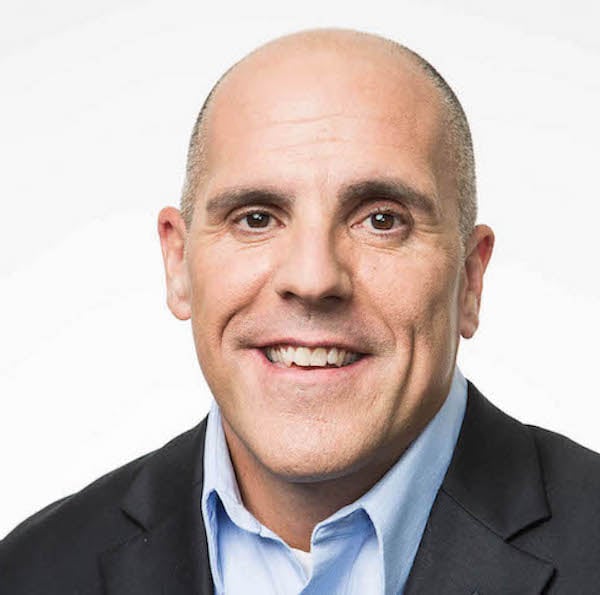Why You Should Use a Speed to Lead Tool in 2023
Our average attention span has declined in the last twenty years, from 12 seconds in 2000 to 8...

Let’s say your tooth has really been bothering you lately, and after a few weeks of trying to ignore the intense pain, you can’t handle it any longer. Unfortunately, you just switched dental insurance and your current dentist does not take your new provider so you are now in the market for a new dentist. Do you take a shot in the dark and go with the first dentist you come across in your area, hoping for the best? Or, do you go to the dentist who comes highly recommended and praised by a neighbor that you trust?
I don’t know about you, but I would definitely go to the neighbor-approved dentist.
Referral marketing is a method of promoting products or services to new customers through referrals, usually via word of mouth. Such referrals often happen spontaneously, but businesses can also influence this through appropriate strategies. Your best referrals will come from those in your inner circle, those people who know the value that your business holds and are willing to share their enthusiasm about your business with others.
No matter the size, shape, or type of business you have, referrals are priceless. And no matter how satisfied your customers are because of the exceptional products or services that you undoubtedly offer, these happy customers may never share their excitement unless they are prompted to do so.
A referral is not just a half-hearted suggestion. It is a reliable recommendation from a confidant. It’s common to reach out and rely on another’s experiences and expertise when searching for products, services, or specialists for ourselves, and people will often act on such advice when it is given from a trusted source such as their family or friends. Basically, your future customers need a referral so they can find YOU!
Why not create a program that helps your customers increase their loyalty to you, while also helping you spread the word about your business?
As we mentioned earlier, referrals are not automatic. While some “just happen,” most take place because something triggers it (whether that be an inquiry, incentive, etc.). Statistics show that 1 in 3 people come to a brand through a recommendation, and customers who were referred by already loyal customers have a 37% higher retention rate than those who weren’t. Additionally, a Nielsen study shows that word-of-mouth referrals are the most trusted form of advertising, and the second doesn’t even come close to the impact of a referral.
Some business owners assume that wonderful customer service or a terrific product alone will generate referrals on their own. This is just not so. Current customers are the ones who understand the value of your product and can best measure a good fit between it and a prospect. But, sometimes they need a little coaxing. By creating a referral program you create motivation to share, show appreciation for current and incoming customers, as well as build engagement from customers.
A referral rewards program is an organized process in which someone is rewarded for spreading the word about our business or product. Referrals are not “one size fits all”; what works for one business may not work for the next. Let’s take a look at how to build one that can be molded to your specific needs:
Make sure no matter what you’re rewarding, who you choose to reward, or how much you choose to reward, that you remember to thank your customers whenever they make a referral. A little appreciation can go a long way!
There are a myriad of software solutions that will help make it easier for you as you begin setting up your referral program. Here are a few of Calldrip’s favorites:
Just like you have to promote the product or service that you offer, you also have to advertise your referral program before you can expect anyone to actively participate. How you create customer awareness of the program is an important factor in your future success. Here are a few ideas to get your program out there:
It is extremely helpful to see successful examples as you are working your way through developing your own referral rewards program.
Dropbox – Dropbox, an online storage/file transfer service, created a product-based reward system rather than a monetary one. They offer an extra 500 MB of free storage space to the customer who makes the referral and to the newly referred user. This program had a profound effect on enrollment, increasing membership nearly 60% in 2010.
Harry’s – Before even launching their product, Harry’s Shave Club offered a referral program that was the catalyst to making their brand a household name. They first gathered emails as an identifier for tracking referrals, and then gave each user a shareable link (whether through email, Facebook, or Twitter) that took any of their referrals to a splash page coded specifically to that user. Users then had the opportunity to earn free product. The more people who signed up with their unique code, the bigger the prize they earned. In just one week they were able to gather nearly 100,000 email addresses.
Uber – Uber, a private on-demand taxi, has taken transportation by storm and has a dual-sided reward built right into its product. Each customer is assigned a personalized referral code as soon as their account is activated and each time a new account is created using this unique referral code, both parties get their next Uber trip free.
Tesla – Proof that a referral rewards program is fluid, the electric car company, Tesla, has changed its referral program over the years as its customer base expanded. They initially offered $1000 to customers for their referral, but now give Tesla owners who refer multiple people the opportunity to capitalize on better prizes, such as an exclusive Powerwall 2 Battery, invitations to exclusive parties, or the opportunity to buy other special edition products not available to the public. In addition, the first person in their region to refer 20 people will receive a free Model S or Model X.
Evernote – This note-taking software system created a referral program that awards points to a customer each time a referral is made. Accumulated points can be turned in for free access to the software’s premium features. In addition, every time a customer’s referred lead upgrades to Evernote Premium, the customer who submitted the referral receives additional points. It’s the referral that keeps on giving!
Referrals can come from anywhere – a satisfied customer, neighbor, celebrity endorsement, or close family member or friend. The key is to utilize these referrals in a well-designed program so that you can inspire all of your customers to refer you. Are you harnessing this power?
Want more helpful tips to help grow your business and engage customers, or know someone who would also benefit? Then step right up and share this post! Also, If you’ve had a great experience with your own referral programs let us know in the comments below. Here at Calldrip, we’re always up for learning more!

Michelle is the Content Marketing Manager at Calldrip. When she's not producing great content she enjoys reading, running, traveling, and spending time with her family.

Our average attention span has declined in the last twenty years, from 12 seconds in 2000 to 8...

The world of business is competitive, and in today's economy, it's more important than ever to be...